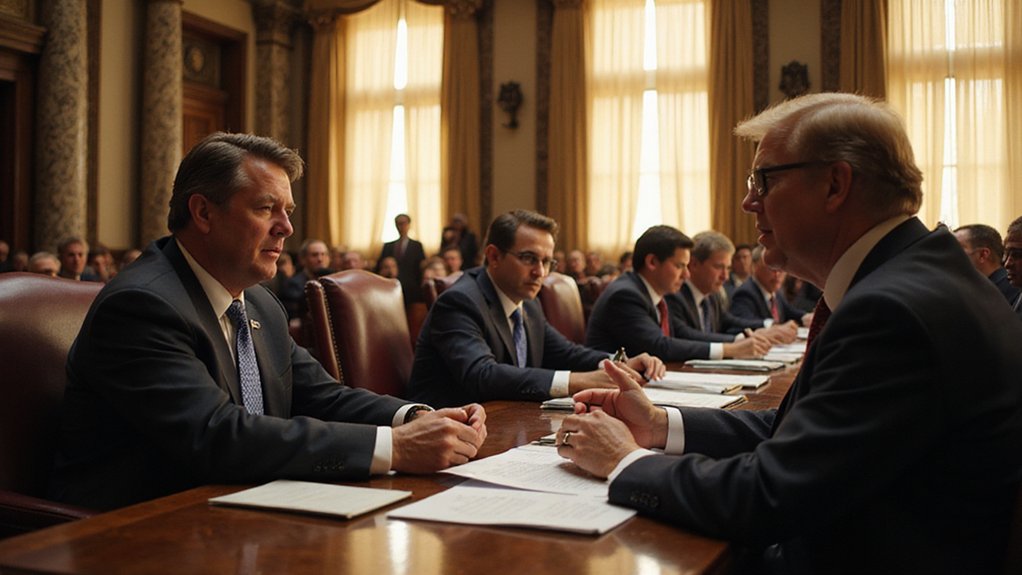While previous administrations treated cryptocurrency with the regulatory equivalent of a hazmat suit, Trump’s Digital Asset Market Policy Working Group has revealed an ambitious blueprint that positions digital assets not as financial pariahs, but as cornerstone components of America’s economic infrastructure.
Released in July 2025, the Digital Asset Integration Strategy represents perhaps the most extensive governmental embrace of cryptocurrency in American history. The plan doesn’t merely tolerate digital assets—it actively champions their integration into everything from 401(k) retirement plans to mortgage assessments, suggesting a future where bitcoin volatility might determine whether millennials can finally afford houses (a proposition that would have seemed absurd just years ago).
Bitcoin volatility determining millennial homeownership prospects would have seemed absurd just years ago, yet here we are.
The regulatory framework proposed is surprisingly sophisticated, calling for the “Digital Asset Market Clarity Act” while expanding CFTC oversight to spot markets for non-security digital assets. This represents a marked departure from the previous approach of regulatory agencies playing hot potato with crypto oversight responsibilities, each hoping someone else would handle the inevitable enforcement headaches. The administration acknowledges that premature sales of government-held bitcoin have already cost taxpayers over $17 billion in lost value.
Perhaps most striking is the establishment of a Strategic Bitcoin Reserve through executive order in March 2025. The Treasury will treat bitcoin as a reserve asset alongside gold and foreign currencies—a development that transforms the cryptocurrency from internet funny money into legitimate government holdings. The reserve, capitalized through forfeiture proceedings rather than taxpayer funds, comes with a no-sale mandate, effectively making Uncle Sam a bitcoin HODLer¹.
The administration’s vision extends beyond mere acceptance to positioning America as the “global crypto capital,” with agencies required to disclose all digital asset holdings while developing budget-neutral acquisition strategies. The emphasis on transparency and strategic management suggests recognition that government crypto holdings require the same fiduciary responsibility as traditional assets. The blueprint aims to attract foreign investment in U.S. crypto markets while enhancing America’s competitive position in the rapidly evolving digital economy.
Yet for all its extensive scope, the blueprint contains one glaring omission: virtually no mention of stablecoins, despite their $150 billion market capitalization and central role in digital asset trading infrastructure. This oversight is particularly puzzling given stablecoins’ importance in decentralized finance ecosystems the plan explicitly encourages.
The strategy ultimately reflects a remarkable philosophical shift—from crypto skepticism to full-throated embrace, though whether this enthusiasm survives the first major market correction remains an open question. The plan notably excludes any framework for cryptocurrency mining, despite its significance as the backbone infrastructure that secures digital asset networks.
¹ Cryptocurrency slang for “hold on for dear life,” referring to long-term holding strategies.









